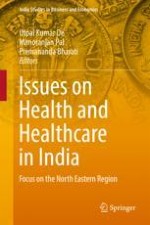2018 | OriginalPaper | Chapter
11. Child Deprivation in Indian Context: Concern About Health- and Education-Related Issues
Authors : Soumyendra Kishore Datta, Krishna Singh
Published in: Issues on Health and Healthcare in India
Publisher: Springer Singapore
Activate our intelligent search to find suitable subject content or patents.
Select sections of text to find matching patents with Artificial Intelligence. powered by
Select sections of text to find additional relevant content using AI-assisted search. powered by
